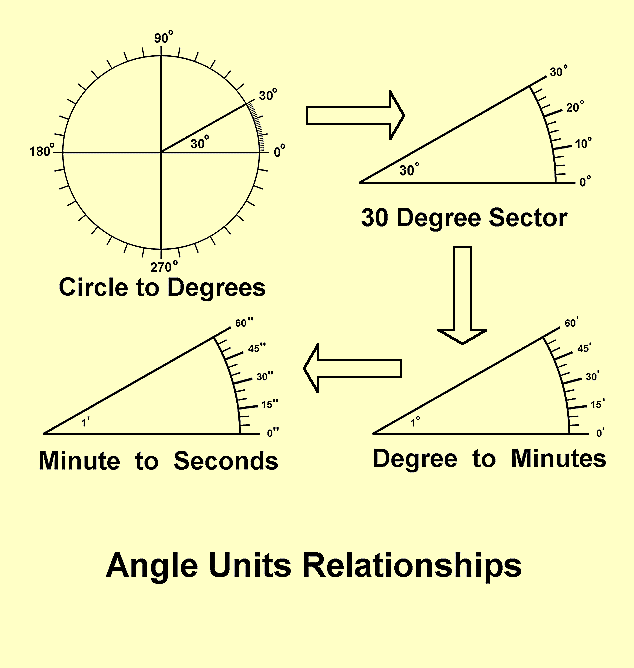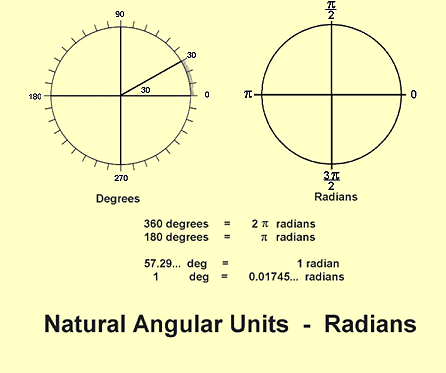
There are several units that are commonly used for
angles. In addition, there is confusion because latitude and longitude
are usually expressed as three numbers, the first being the number of whole
degrees, the second the whole number of minutes and the third the number
of seconds. Here minutes and second really mean minutes of arc
and seconds of arc.

As can be seen in the drawing, the each smaller unit is 1/60 th of the last unit. For example, 1 degree is equal to 60 minutes and 1 minutes is equal to 60 seconds. Often minutes of arc is denoted by a single quote (') after the number and seconds of arc by a double quote (").
Be careful to not confuse these units with time units. To make things more confusing, there is an angular unit of hours - used in astronomy, but it is not the same as a degree. In fact 24 hours of angle is a circle, making 1 hour if arc 15 degrees.
In addition to these "human oriented" units, there is a "natural" unit for angles. This is called the radian and is closely related to the length along the arc of a circle.

As can be seen, radians don't usually come out
to nice even values. This is because the value of pi
is an irrational number. This means that it does not have an exact
representation. The value is a never ending number. To
5 decimal places :
pi = 3.14156
but it really goes on forever. In many books of mathematics tables values of pi to a very large number of digits is given. For example the CRC Mathematical Tables gives
pi = 3.14159 26535 89793 23846 26433 83279 .......
The value of radians as angular units occurs in two places, in computer programs and in finding arc lengths.